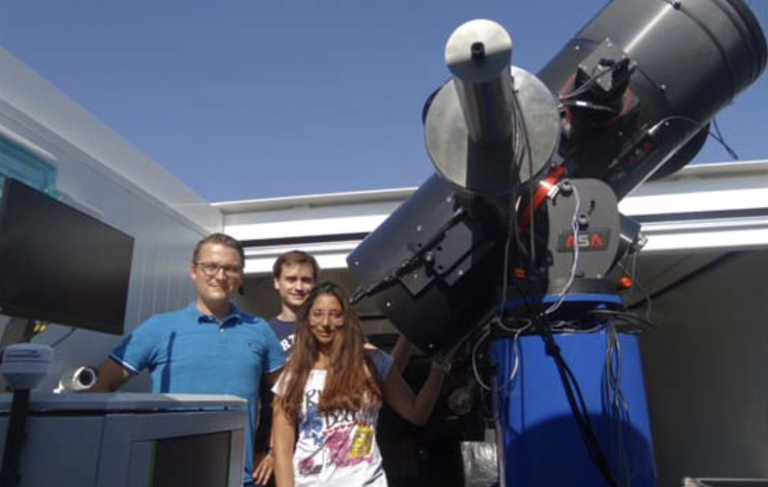Introduction
Airbus Defence and Space GmbH has developed Airbus Robotic Telescope (ART), an end-to-end capability for Space Surveillance & Tracking. ART performs automated optical observations of space objects from Low Earth Orbit (LEO) to Geostationary Earth Orbit (GEO). The system serves as a ground-based test-bed for the development of a future space-based system and provides data for Space Surveillance & Awareness (SSA) development activities. In this article, we will provide an overview of the basic information, site and infrastructure, and observation modes of ART.
Basic Information
ART is located in Extremadura, Spain and has a 400 mm aperture diameter and a 960 mm focal length. The detector used in ART is a CCD interline detector with a size of 4008 x 2672 pixels and a pixel scale of 1.93 arcsec/pixel. ART can track objects from 300 nm to 1000 nm in the panchromatic wavelength range. The typical readout time is 2 MHz (slow) and 12 MHz (fast). The data produced by ART is in the form of raw images in FITS format and astrometric and photometric reductions in CCSDS TDM format.
Site and Infrastructure
ART is located in southern Spain for easy access and favorable environmental and meteorological conditions. The facility is fully equipped for remote control of the robotic telescope and provides a pier, roll-off roof, fiber-optic internet connection, power, and maintenance. The observation conditions at ART's location are good with an average of 21.7 mag/arcsec2 and seeing below 2 arcsec, with between 250 and 270 clear nights per year.
Observation Modes
ART has two observation modes - survey and tracking. In the survey mode, ART possesses a relatively wide field of view for its aperture and can be provided with right ascension/declination time series for the pointing of the telescope and respective observation parameters. In the tracking mode, ART can track objects down to LEO angular rates and sensor tasking can be done through high-level inputs or low-level inputs.
Airbus SST Data Processing
The Airbus SST data processing system handles ground-based and space-based sensors, radar and optical measurements, orbit determination, object catalogue, and standardised CCSDS data formats. The system can handle Tracking Data Messages (TDM) and Orbit Data Messages (ODM).
Conclusion
Airbus Robotic Telescope (ART) is a powerful tool for Space Surveillance & Tracking, providing end-to-end capabilities for observing space objects from LEO to GEO. The system serves as a ground-based test-bed for the development of a future space-based system and provides data for SSA development activities. The site and infrastructure of ART in southern Spain provides favorable conditions for observations, and the system has two observation modes - survey and tracking. The Airbus SST data processing system can handle a wide range of data formats and provide accurate results.
For more information please take a look at the detailed analysis.
